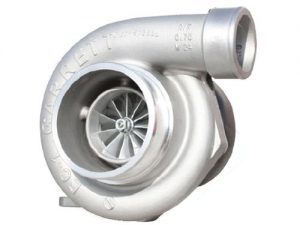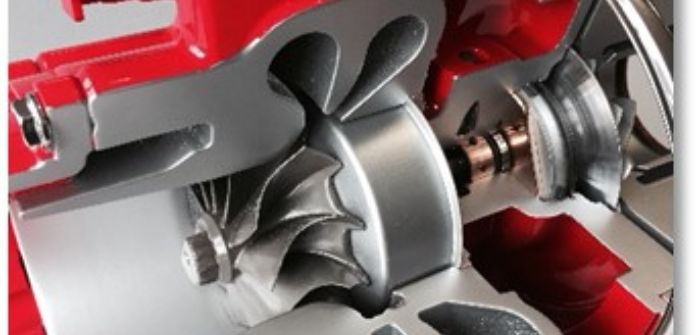Some Known Details About Turbochargers
Table of ContentsSome Known Details About Turbochargers Unknown Facts About TurbochargersFascination About Turbochargers
7 (in petrol engines). The additional fuel is not burned (as there is insufficient oxygen to complete the chemical response), rather it goes through a stage modification from atomized (liquid) to gas. This stage modification absorbs heat, and the included mass of the additional fuel lowers the typical thermal energy of the charge and exhaust gas.A wastegate regulates the exhaust gas circulation that goes into the exhaust-side driving turbine and therefore the air consumption into the manifold and the degree of boosting. It can be managed by an increase pressure helped, normally vacuum hose accessory point diaphragm (for vacuum and positive pressure to return commonly oil polluted waste to the emissions system) to force the spring-loaded diaphragm to stay closed up until the overboost point is noticed by the ecu or a solenoid run by the engine's electronic control unit or a boost controller.

To prevent this from occurring, a valve is fitted between the turbocharger and inlet, which vents off the excess atmospheric pressure. These are called an anti-surge, diverter, bypass, turbo-relief valve, blow-off valve (BOV), or discard valve. It is a pressure relief valve, and is generally operated by the vacuum from the consumption manifold.
The air is typically recycled back into the turbocharger inlet (diverter or bypass valves), however can also be vented to the atmosphere (blow off valve). Recycling back into the turbocharger inlet is required on an engine that utilizes a mass-airflow fuel injection system, because disposing the excessive air overboard downstream of the mass air flow sensor causes an excessively abundant fuel mixturebecause the mass-airflow sensing unit has actually already represented the additional air that is no longer being utilized.


Turbochargers Things To Know Before You Buy

Turbocharging can increase company website power output for an offered capacity or boost fuel efficiency by enabling a smaller displacement engine - turbochargers. The 'Engine of the year 2011' is an engine utilized in a Fiat 500 equipped with an MHI turbocharger. This engine lost 10% weight, saving up to 30% in fuel usage while delivering the same peak horsepower (105) as a 1. Several Japanese business produced turbocharged high-performance motorbikes in the early 1980s, such as the CX500 Turbo from Honda- a transversely installed, liquid cooled V-Twin likewise offered in naturally aspirated kind. Ever since, couple of turbocharged motorcycles have been produced. This is partly due to an abundance of bigger displacement, naturally aspirated engines being available that provide the torque and power advantages of a smaller sized displacement engine with turbocharger, but do return more direct power qualities.
The very first turbocharged diesel truck was produced by (Swiss Device Works Saurer) in 1938 (turbochargers). A natural use of the turbochargerand its earliest known usage for any internal combustion engine, starting with speculative installations in the 1920sis with aircraft engines. As an aircraft climbs to greater altitudes the pressure of the surrounding air quickly falls off.
However, considering that the charge in the cylinders is pressed in by this air pressure, the engine usually produces just half-power at look at this site complete throttle at this altitude. Pilots would like to benefit from the low drag at high elevations to go faster, but a naturally aspirated engine does not produce enough power Check Out Your URL at the same altitude to do so.
As seen in the table below, there is substantial scope for forced induction to make up for lower density environments. A turbocharger treatments this problem by compressing the air back to sea-level pressures (turbo-normalizing), or even much higher (turbo-charging), in order to produce ranked power at high altitude. Considering that the size of the turbocharger is chosen to produce a provided amount of pressure at high altitude, the turbocharger is large for low elevation.
Early systems used a fixed wastegate, leading to a turbocharger that worked just like a supercharger. Later systems utilized an adjustable wastegate, managed either by hand by the pilot or by an automatic hydraulic or electrical system. When the airplane is at low elevation the wastegate is generally totally open, venting all the exhaust gases overboard.
An Unbiased View of Turbochargers
The elevation at which the wastegate completely closes and the engine still produces full power is the vital altitude. When the aircraft climbs up above the crucial elevation, engine power output reduces as altitude increases, just as it would in a naturally aspirated engine. With older supercharged airplane without Automatic Boost Control, the pilot should continually adjust the throttle to keep the required manifold pressure during ascent or descent.